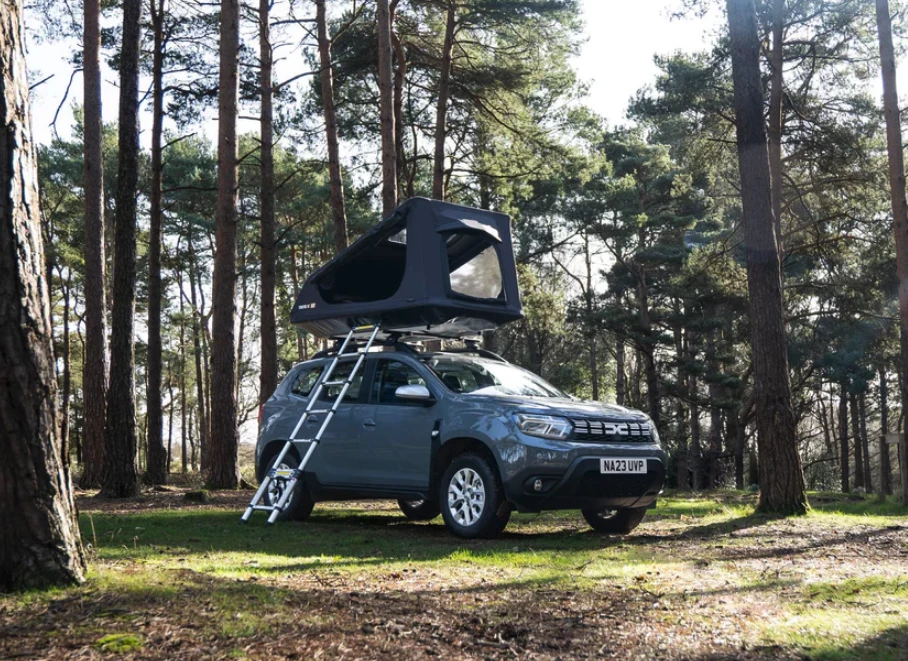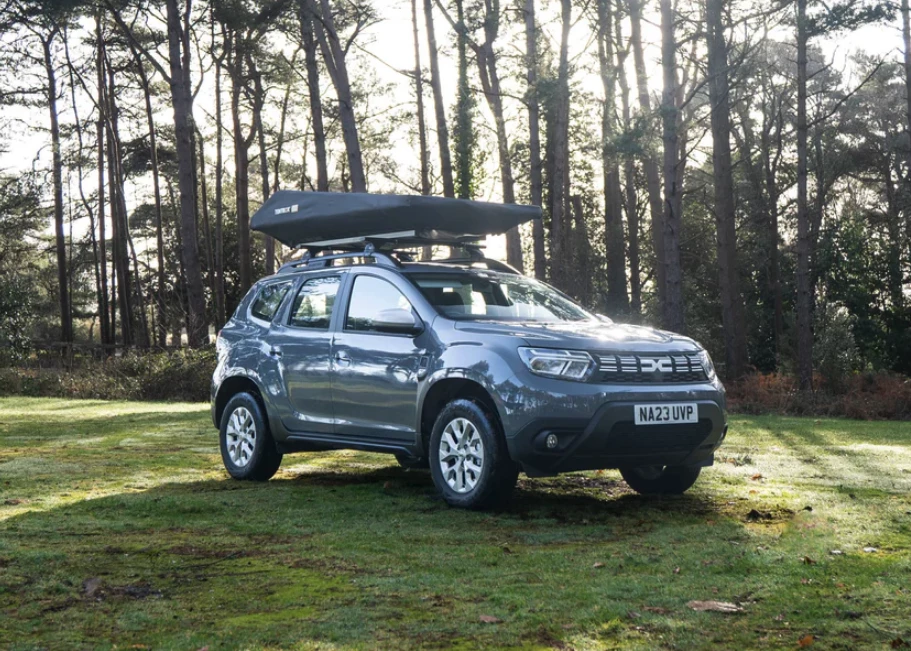The last we looked, the world's lightest traditional rooftop tent came from California shop Inspired Overland (IO). With its all-new Go, British tentmaker Tentbox undercuts IO by several pounds, grabbing the market's top spot for ultralight design. The skeletal softshell Tentbox Go isn't the sleekest, fanciest car-top abode out there, but it sets up in under two minutes, sleeps two people, provides stormproof weather protection with plenty of ventilation, and is light enough to ride atop small cars. And it barely breaks the four-figure mark, offering one of the market's more affordable roof camping options.
Tentbox has been designing rooftop tents in the UK for the past decade but didn't bring its wares over to the US until late 2022. That's worth noting because the new Tentbox Go is currently up for preorder on the company's US web shop but not its UK one, slightly surprising since the initial photos show the tent riding on a Dacia, a make not available in the States. Perhaps Tentbox will add the Go to its UK lineup in the future.

While Tentbox already has several "Lite" models on both sides of the Atlantic, the Go takes the company's ultralight design even lower. A combination of tubular steel frame and taut ripstop-polyester skin arranged into a compact two-sleeper wedge keeps listed weight down to an impressive 73 lb (33 kg), a full 7 lb (3.2 kg) lighter than the 80-lb (36-kg) listed weight of the Inspired Overland Carbon Fiber Lightweight RTT and GFC Superlite.
The Tentbox Go is also 3 lb (1.4 kg) lighter than IO's 76-lb (34.5 kg) Standard Lightweight Rooftop Tent, previously the lightest RTT we'd seen from the traditional rooftop tent segment. The only RTTs we've seen weighing less are inflatable.

Of course, hitting market-low weights often involves compromises. The Go features a fabric roof construction (with internal crossbar supports) rather than the hard-panel roofs typical on wedge-style tents. Similarly, on the other side, it features a taut fabric sleeper floor secured to the lower tubular steel frame, in place of the usual mattress atop hard floor panel.
The Go also lacks gas struts, relying on manual opening and separate size-adjustable support beams to keep the roof up. And while strut-assisted ultralight wedge tents usually pack quite flat, this one packs down into a reversed wedge with an 18-in (48-cm) end that's multiple times the thickness of the market's slimmest RTT designs.
Tentbox doesn't skimp everywhere, though, as the Go includes nice features like a mesh skylight with zippered weatherproof shade, large, zip-panel-covered mesh side doors and front window, and a swag-like vent on the foot wall for increased airflow. We don't quite believe Tentbox's "four-season" designation given the lack of insulation, but we imagine it will be comfy for three-season camping. The company says it's built to hold up to winds as fierce as 39 mph (63 km/h).

Campers enter the Go via an included telescopic 102-in (259-cm) side ladder. Inside, the floor measures 45 x 87-in (114 x 221-cm) to sleep two people, and a storage pocket and tablet holder provide some organization. The tent is rated to a 650-lb (295-kg) capacity.
The Tentbox Go is available for preorder now for a price of $1,199, which includes mounting hardware and free delivery from Tentbox's Arizona warehouse. Tentbox plans to start getting the tents out to customers in June. Unlike other rooftop tents that ship fully assembled, the Go ships as a series of structural tubes and fabrics that buyers assemble themselves. It can also be broken down again to save space while storing.
The video below gives a closer look at Tentbox Go setup, use and features, and Tentbox has several other videos about the new model on Vimeo.
Source: Tentbox








